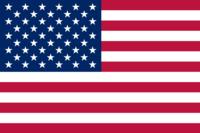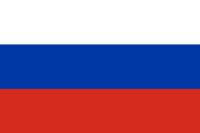
Don’t Let Color Particle Shrinkage Eat Into Your Profits! In-Depth Analysis of Sand-in-Water Coating’s Color Particle Shrinkage
Hz info2025-11-14 10:05
Hz info,
In sand-in-water coating construction, have you ever encountered such troubles: some products can achieve uniform full coverage with only 1.3kg/㎡, which is beautiful and material-saving; while others, even with a dosage of 1.8kg/㎡, still "show the base" after drying, revealing the intermediate coat or substrate. This not only results in poor effects but also wastes materials and working hours. Many people first think it’s a construction issue, but in fact, 90% of the cases are hidden by a key factor—color particle shrinkage of sand-in-water coating.
1. Color Particle Shrinkage: The Invisible Factor Determining "Dosage" and "Coverage Effect"
To achieve "full coverage", sand-in-water coating essentially relies on color particles forming a continuous, complete and gap-free decorative layer on the wall. But what many people don’t know is that color particles don’t form a film "as is" after construction. From the wet state when just sprayed on the wall to complete drying and curing, color particles will shrink in volume due to water evaporation and resin curing, which we call "color particle shrinkage". This slight difference in physical properties directly determines the final effect and material dosage:
(1)High-shrinkage color particles: Volume shrinks significantly after drying. They seem to cover the surface during construction, but "shrinkage holes" and "base exposure" appear after drying. You can only make up for it by adding more materials and repeated touch-ups, leading to actual dosage far exceeding expectations. Even 1.8kg/㎡ is hard to achieve real full coverage.
(2)Low-shrinkage color particles: Volume remains basically stable before and after drying. The fuller the coverage during construction, the more solid the effect after drying. Usually, 1.3–1.5kg/㎡ can achieve dense coverage, saving materials and labor with long-lasting and stable effects.
2. Why Does Your Sand-in-Water Coating’s Color Particles Shrink So Much?
Color particle shrinkage is directly determined by raw materials and production processes:
(1)Resin content and quality: Resin is the "framework" of color particles, responsible for bonding pigments and fillers, and maintaining structural stability after drying. If the resin content is low, or cheap and inferior resins (such as certain acrylic emulsion substitutes) are used, the shrinkage rate during film formation will increase significantly.
(2)Ratio of pigments to fillers: High-quality color particles have a scientific ratio of pigments to fillers. Fillers not only enhance the texture and weather resistance of color particles but also support the structure and resist shrinkage. If fillers are reduced and water-based agents are increased to cut costs, severe shrinkage is inevitable after drying.
(3)Production process and quality control: Regular coating manufacturers will repeatedly adjust the formula through "pre-shrinkage testing", controlling the color particle drying shrinkage rate between 3%–5%. However, some unscrupulous manufacturers skip this link to save costs and produce directly. The color particle shrinkage rate may exceed 8% or even higher, and no amount of remediation after construction can hide the flaws.
3. How to Quickly Identify "High-Shrinkage Color Particles"?
(1)On-site test spraying to check dry film: Ask the merchant to spray a sample on cardboard or cement board on-site. After complete drying, observe if there is base exposure, color blurring or microcracks. High-shrinkage color particles become significantly "thinner" after drying, and even have uneven colors.
(2)Directly ask about the shrinkage rate: Take the initiative to ask "What is the color particle drying shrinkage rate?" If the other party can’t answer or the rate is higher than 5%, it is recommended to choose cautiously.
(3)Request to view test reports: Products from regular coating manufacturers have relevant test reports. Stone-like coating brands with complete reports are more trustworthy.
Through the above methods, you can quickly identify the shrinkage of sand-in-water coating’s color particles, avoid "base exposure" during construction, and achieve material-saving and beautiful results.
As a source manufacturer of stone-like coatings, Limeijia Coatings not only has a high-quality and rich product line of stone-like coatings but also can customize and provide products with nearly 10,000 stone-like effects for customers. It can meet the home improvement and commercial decoration needs of different levels and requirements, and is widely used in various construction projects such as rural self-built villas, high-end residential areas, government institutions and schools, office buildings, hotels, etc., and is widely trusted and praised by users.
Business Cooperation Email for Limeijia: cnlimeijia@gmail.com
Whatsapp:+852 57495052
MORE HZinfo
- JTBON Invites You to Attend CHINACOAT 2025 (Shanghai)
- Use Exclusive Invitation Code:WJVMWV5C
-
2025-11-14
- Meet Us at CHINACOAT 2025 | Cadello: Excelling Through Stability
- Cadello?warmly invites you to our booth(E5.D47) to discover how?color,?stability, and?reflection?combine to create new material performance.
-
2025-11-14
- Don’t Let Color Particle Shrinkage Eat Into Your Profits! In-Depth Analysis of Sand-in-Water Coating’s Color Particle Shrinkage
- color particle shrinkage of sand-in-water coating.
-
2025-11-14


 English
English 简体中文
简体中文 Русский
Русский إنجليزي
إنجليزي

